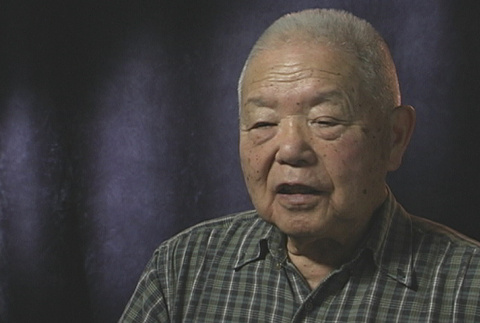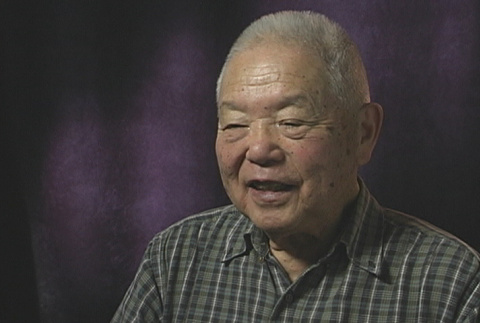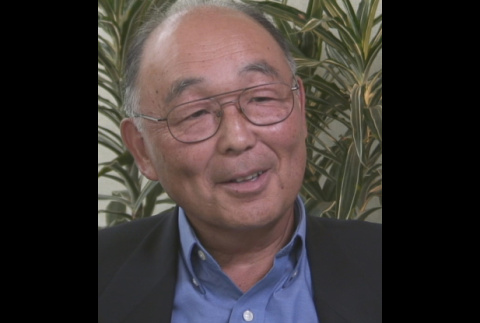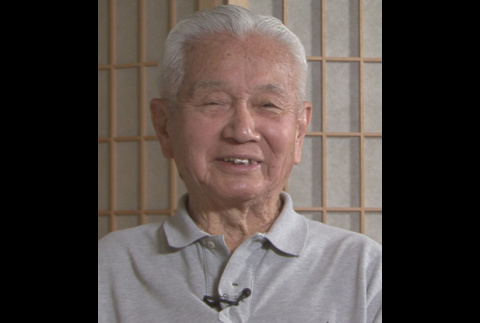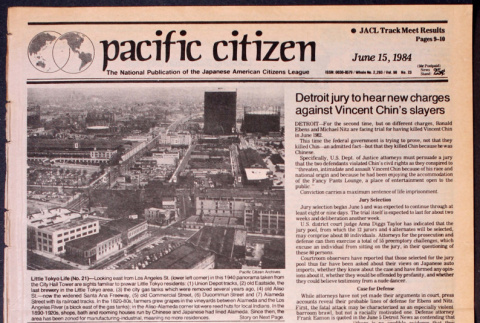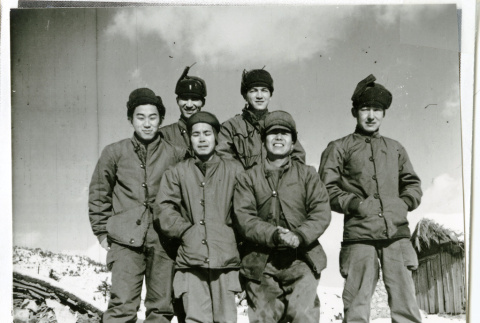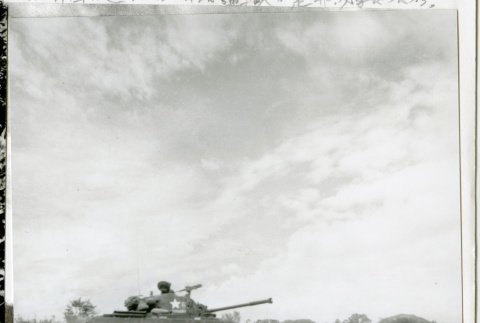936 items
936 items
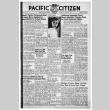
doc
The Pacific Citizen, Vol. 24 No. 9 (March 8, 1947) (ddr-pc-19-10)
Selected article titles: "Report Twelve Thousand Nisei in Japan Have Applied for Repatriation to United States" (p. 1), "California Supreme Court Hears Stockton Theatre Case On Issei Business Rights" (p. 1), "Tule Lake Test Cases Moved To New Court" (p. 1), "Bill Seeks Repeal Of California School Segregation" (p. 1), "Nisei, Negro Groups Learning to Live, …
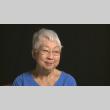
vh
Kay Uno Kaneko Interview (ddr-densho-1000-282)
Nisei female. Born October 7, 1932, in Los Angeles, California. Grew up in Los Angeles, age nine when Japan bombed Pearl Harbor in 1941. During World War II, removed with family to the Santa Anita Assembly Center, California, and the Granada (Amache) concentration camp, Colorado. Transferred to the Crystal City internment camp, Texas, so family could …
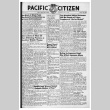
doc
The Pacific Citizen, Vol. 32 No. 17 (May 5, 1951) (ddr-pc-23-18)
Selected article titles: "Two Hundred 442nd Veterans Will Be Guests at Tokyo Premiere of 'Go for Broke!' (p. 1), "Ruling by Supreme Court May Affect Japanese Aliens" (p. 1), "JACL ADC Official to Testify in Favor of Fair Employment Law Before Assembly Group" (p. 2), "California Assemblyman Plans Resolution to Delete Racist Terms in State's Constitution. …

doc
Pacific Citizen, Vol. 49, No. 22 (November 27, 1959) (ddr-pc-31-48)
Selected article titles: "Rule Cal. Campus groups eliminate race bias by 1964" (p. 1), "Li'l Abner cartoon use of 'Japs' charged as 'appalling incident' by Cleveland CLer" (p. 1), "Tacoma Nisei who studied art in Los Angeles, Chicago, Paris settles down in New Mexico; manages nursery, rock landscaping" (p. 3), "U.S. colleges note impetus of students …

doc
Order battle map, Korean War front line (ddr-csujad-38-500)
A page from: George Naohara scrapbook: Korean War and before leaving Japan (csudh_nao_0600). Includes George Nobuo Naohara's handwritten notes on the Korean War and a newspaper clipping with an image capturing the wounded soldiers. George Nobuo Naohara was one of the wounded soldiers and taken to a field hospital by Capt. Takahashi and Sgt. Miyamoto. See …
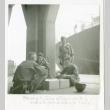
img
Passing the time while awaiting order to board ship to Korea (ddr-csujad-38-450)
Photographed are U.S. soldiers at Kokura Port, waiting for the order to depart for Korea. The caption reads: Passing the time while awaiting order to board ship to Korea. The photo was taken when 24th Infantry Division departed for Korea. Title from caption. Item from: George Naohara scrapbook: Korean War and before leaving Japan (csudh_nao_0600). See …

img
Matsui family (ddr-csujad-25-206)
A page from tthe the Taenaka family photo album. Pasted on the page is a group photograph of the Matsui family. It is taken at the front door of Matsui's house probably in Osaka, Japan on Takako Matsui's wedding day. From the left: Saki, Taka [=Takako], Ukichi, Yone, Harue, Kinoko, and Yanosuke Matsui. See this object …
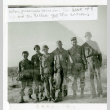
img
U.S. soldiers (ddr-csujad-38-457)
Photographed are U.S. soldiers lining up. The English caption reads: When prisoners come in, line up!, and the toller got the work. Translation of the Japanese caption: All were decided depending on the height of soldiers. Taking a break near Daejeon. Item from: George Naohara scrapbook: Korean War and before leaving Japan (csudh_nao_0600), page 35. See …
![Letter from Satoru [Sasaki] to Seiichi Okine, November 7, 1951 [in Japanese] (ddr-csujad-5-272)](https://ddr.densho.org/media/cache/9a/d7/9ad72a8fa6a88b36284e851d7a73f89d.jpg)
doc
Letter from Satoru [Sasaki] to Seiichi Okine, November 7, 1951 [in Japanese] (ddr-csujad-5-272)
A letter from Satoru Sasaki in Hiroshima, Japan to his uncle, Seiichi Okine. The letter includes general correspondence, informing of his family's well being. Entering the rice harvest season, he has been busy harvesting in the golden paddy fields. He wishes to meet the Okines sometime. The arrival date of the letter, December 7 is recorded. …

av
Interview with Takeshi Kameoka, (audio) (ddr-csujad-56-2)
Sonoma County resident Takeshi Kameoka was interviewed on April 15, 1978, by a Sonoma State University student for the North Bay Ethnic Archive Project. He talks about early life, moving to Japan with his family following father's death, returning to US and taking up vegetable farming. Discusses church as center of Japanese American community. See this …
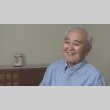
vh
Giro Nakagawa Interview (ddr-densho-1000-422)
Nisei male. Born March 13, 1921, in Seattle, Washington. Grew up in Kent, Washington, where parents ran a farm. In the 1930s, moved to South Bend, Washington, to work for the New Washington Oyster Company. During World War II, removed to the Pinedale Assembly Center, California, and soon left to work on farms in Utah for …
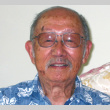
av
Tetsuo "Ted" Hasegawa Interview (ddr-densho-400-4)
Ted Hasegawa was born on January 16, 1921, in Sacramento, California, and educated in Japan. When he returned to Torrance, California, where his parents farmed, he started kindergarten at the age of 11. After high school, he took automotive classes at a trade school in Los Angeles. Hasegawa witnessed the mass eviction of Japanese residents from …
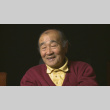
vh
Charles Oihe Hamasaki Interview (ddr-densho-1000-274)
Nisei male. Born October 7, 1922, in Japan, while parents were visiting family. Came to the U.S. at three months old, and grew up in Terminal Island, California. After the bombing of Pearl Harbor, picked up along with Issei father and taken to Fort Lincoln (Bismarck), North Dakota. Transferred from Fort Lincoln to the Santa Anita …
![Letter from Minoru Sasaki to Mr. S. Okine, September 22, 1947 [in Japanese] (ddr-csujad-5-210)](https://ddr.densho.org/media/cache/16/60/16609a5a7affb3b79774a753d447d242.jpg)
doc
Letter from Minoru Sasaki to Mr. S. Okine, September 22, 1947 [in Japanese] (ddr-csujad-5-210)
A letter from Minoru Sasaki in Hiroshima, Japan, to his brother-in-law, Seiichi Okine. He thanks Seiichi for the gift, including ajinomoto [monosodium glutamate], sugar, candies, and pencils. He describes the shortages of basic necessities in Japan and states that all children under age 8 do not know the real taste of sugar. He also expresses his …

Narrator Iwao Peter Sano
Nisei male. Born June 9, 1924, in Brawley, California. Grew up in Brawley until the age of eleven, when family decided to send him to Japan to be adopted by an uncle and aunt. Attended school in Japan and was conscripted into the Japanese military. After Japan surrendered, was captured as a prisoner of war and …

Narrator Arthur Ogami
Nisei male. Born April 10, 1922, in Whittier, California. Spent childhood in California, before being removed to Manzanar concentration camp in 1942. Left Manzanar several times to work as a beet topper for local farmers. Decided to expatriate to Japan because of mother's wishes, and was transferred to Tule Lake concentration camp. In 1945, was moved …
![Letter from Masao Okine to Mr. and Mrs. S. Okine, September 12, 1946 [in Japanese] (ddr-csujad-5-160)](https://ddr.densho.org/media/cache/96/d6/96d638e1560b47cd51c4da27e183bb3c.jpg)
doc
Letter from Masao Okine to Mr. and Mrs. S. Okine, September 12, 1946 [in Japanese] (ddr-csujad-5-160)
A letter from Masao Okine, who is stationed in Japan as a Nisei soldier to his parents, Seiichi and Ayame Okine. This letter is mailed via San Francisco, California by the U.S. Army Postal Service. In the letter, Masao writes about his visit to Hiroshima during the vacation. He meets Naoji Okine, Jokichi Yamanaka, Mr. Sasaki, …
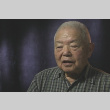
vh
Hideo Hoshide Interview I (ddr-densho-1000-184)
Nisei male. Born September 25, 1917, in Tacoma, Washington. Grew up in Tacoma except for living in Japan for several years at age four. Attended the University of Washington in Seattle, majoring in Political Science, Far Eastern Studies, with a minor in journalism. Prior to World War II, worked as sports editor for community newspaper, The …
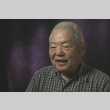
vh
Hideo Hoshide Interview II (ddr-densho-1000-185)
Nisei male. Born September 25, 1917, in Tacoma, Washington. Grew up in Tacoma except for living in Japan for several years at age four. Attended the University of Washington in Seattle, majoring in Political Science, Far Eastern Studies, with a minor in journalism. Prior to World War II, worked as sports editor for community newspaper, The …

vh
Rudy Tokiwa Interview I (ddr-densho-1000-91)
Nisei male. Born July 7, 1925, near San Jose. Grew up in Salinas, California, until he went to Japan at the age of thirteen. Studied in Japan until about 1939. Incarcerated at the Salinas Assembly Center, California, and Poston concentration camp, Arizona. Volunteered out of camp to serve in the U.S. military. Fought in Europe as …

Narrator George Kikuta
Kibei male. Born March 3, 1942, in Los Angeles, California. At only a few months of age, removed to the Manzanar and Tule Lake concentration camps, California. Expatriated to Japan with family during World War II. Grew up in Japan before returning to Los Angeles for high school. Later studied accounting, and became one of the …

Narrator Minoru Tajii
Nisei male. Born February 23, 1924, in Brawley, California. Grew up in El Centro, California, where parents ran a farm. During World War II, was removed to the Poston concentration camp, Arizona. Family signed "no-no" on the so-called "loyalty questionnaire" and transferred to the Crystal City internment camp, Texas, then to Japan. Lived and worked in …

img
Pacific Citizen, Vol. 98, No. 23 (June 15, 1984) (ddr-pc-56-23)
Selected article titles: "Detroit jury to hear new charges against Vincent Chin's slayers" (p. 1), "Asians among California delegates to politick at Democratic convention" (p. 1), "Takamiyama quits sumo, is now grooming successors" (p. 2), "College students nominated to two board positions" (p. 3), "Introducing a JATC director Bill Hamada" (p. 6), "No. Clif. JACL JR. …
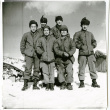
img
U.S. soldiers in Korea (ddr-csujad-38-463)
Photograph of U.S. soldiers in Korea. The caption reads: Winter time, just before Xmas, Chinese army waiting for the freeze to the Yulu River before the big push to attack American Army. Interrogators knew jeep and truck too heavy to cross the river. However, no one know camel are crossing the river! Item from: George Naohara …
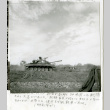
img
General Patton tank (ddr-csujad-38-495)
Photograph of a General Patton tank in a field. The annotation reads: We were delighted that 20 General Patton tanks were finally deployed in 24th Infantry Division. The Korean War started. Initially, there were only two tanks but both were damaged during World War II. [In Japanese]. Item from: George Naohara scrapbook: Korean War and before …
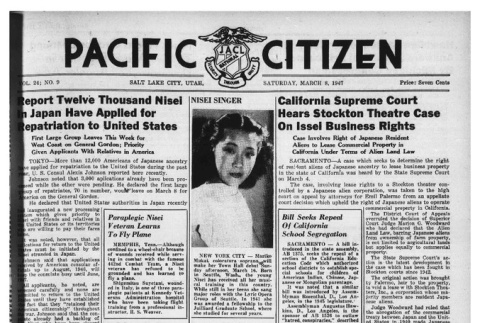
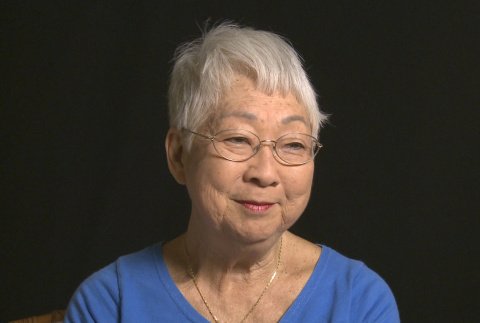

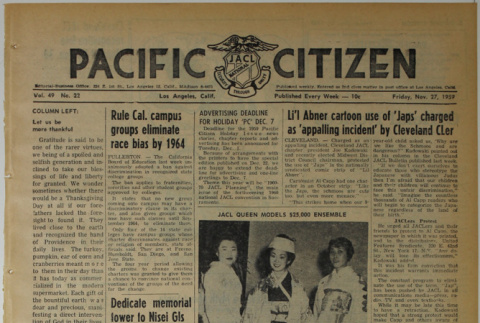
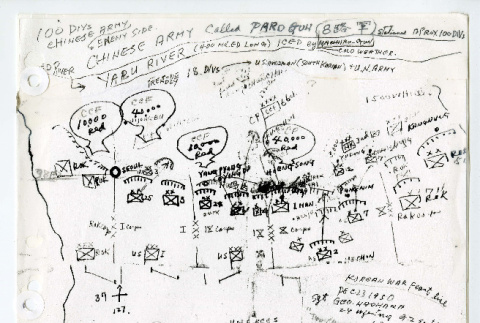

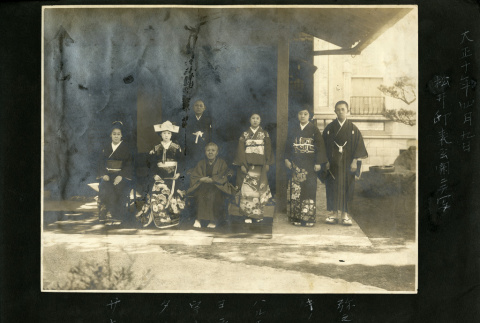
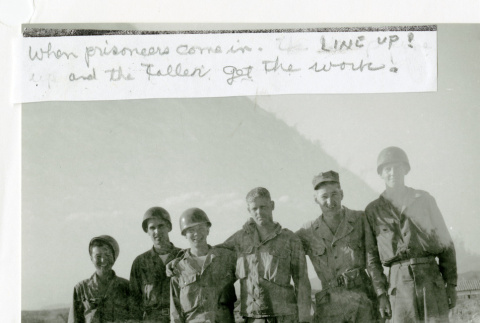
![Letter from Satoru [Sasaki] to Seiichi Okine, November 7, 1951 [in Japanese] (ddr-csujad-5-272)](https://ddr.densho.org/media/cache/46/d5/46d5aaf38ab8012080f1e68087efb033.jpg)




![Letter from Minoru Sasaki to Mr. S. Okine, September 22, 1947 [in Japanese] (ddr-csujad-5-210)](https://ddr.densho.org/media/cache/55/cf/55cf10eb426aa943faea2be1b7217d82.jpg)

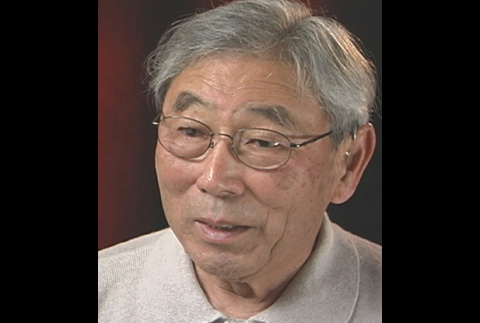
![Letter from Masao Okine to Mr. and Mrs. S. Okine, September 12, 1946 [in Japanese] (ddr-csujad-5-160)](https://ddr.densho.org/media/cache/08/9e/089e14d0745e8d4873311c8aab6a61cf.jpg)
